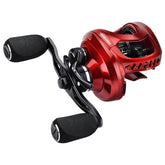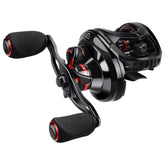
Best Fishing Knots For Braided Fishing Line
Introduction
Working with braided fishing line is normally just the same as working with many other kinds of lines with some unique differences. What many anglers fail to realize is that not all braid in the industry is the same. Some lines are made with different winding processes like reverse winding like KastKing Destron. Others have different numbers of carriers which you can consider to be mini braids that are then wound to make the total line like the KastKing Mega 8, Finesse 8x or even Finesse 16x. Most of the time these types of differences will have little effect on knot strength. There is another attribute that could affect the durability of the knot that I will discuss next.
Coatings
Coatings are often put on braided line to have a water resistant coating on it. Some manufacturers do this to protect the color or to give the line a bit more protection in keeping the fibers together. They sometimes do this to reduce the amount of water saturation that can penetrate the fibers and cause the line to sink or stick to itself as well. It is important to know this so you can exercise some precaution when tying your knots. Why? These coatings can cause the line to be slick which will cause your knots to potentially slip. This is even more of a concern when you consider that the line can get wet and dry out a bit which naturally causes expansion and contraction in the line and thus knots that may slip. When you are working with new line that has coating on it just be sure to lock in the tag in better by leaving it a touch longer. Maybe ⅛” or so just to be sure to have a bit of a backstop in case of slippage. Kastking recognizes this and reduces the coatings on their lines to provide excellent knot strength and reduces potential slippage in their braid.
Best knots
I have always believed that the best knots that an angler will use are the knots they have the most confidence in. The knots that you can tie with your eyes closed or in adverse conditions consistently are the knots that will come through for you when fighting that personal best fish you were lucky enough to hook up to. For the below I will go over the knots I have the most confidence in, what I have encountered as a challenge and what I use them for. Keep in mind that for copyright reasons I will not show pictures of the animated or illustrated knots that are easily found as a google search but will briefly describe the knot in the discussion.
Knots to tackle
One of the most basic and one of the strongest I know is the Palomar knot. The palomar knot is simply a doubling of the line through the eye of the hook, an overhand knot then looping around the hook to tighten. This knot is very easy to tie with some basic caveats. Since the knot is doubled through the eye, you need to be able to get the line through the eye of the hook twice which could prove to be very difficult to do for some of us that do not have great vision any longer. Additionally, you need to be able to get the loop of the overhand knot around the hook or object you are tying to the line. When trying to loop around a long section like a carolina rig with a swivel this could prove difficult just like some of the longer jigs used while fishing where the line could get caught up in the hooks.
Palomar Knot

The next knot is simply the improved cinch knot. A very simple knot that involves the line going through the eye of a hook then looped around to wrap around the main line 5-8 times then back down through the hole you created. A very useful and simple knot that is another one that is taught to many anglers at a very young age. It is strong but when using line that is thinner, coated or a low pound test it can actually slip through the hole and unwind itself. Overall, still strong just need to use it in certain circumstances and you will be fine.
Improved Clinch

We now come to one of my favorite knots that we use here in my area quite frequently. Can be used in saltwater or freshwater and it does not have a weakness that I know of (yet). The San Diego Jam knot is a knot that is looped through the eye of the hook, looped around a finger, wrapped 5-8 times and then “jammed” into the bottom loop then the top loop. Very similar to the improved cinch but it can be tied much faster and has yet to fail me. I have used this knot with 2lbs test flies for fly fishing all the way up to 100lbs braid without fail.
San Diego Jam

Some may consider the last knot here to be mentioned at the beginning of the article. An old favorite is the knot known as the Uni knot. Great for all applications as well this knot starts with the line going through the eye of the hook then you form a loop next to the main line, then wind inside the loop 5-8 times then finishes with the tag end coming out and cinching down. This knot can be a bit more complicated to tie for some but is easily one of the strongest for all braid applications.
Knots to other line
It is important to know that when using braid it is often the case that you will need to tie some monofilament or fluorocarbon as a “top shot” and to hide the braid from the fish. I mentioned the Uni knot just now a very common connection knot for braid to mono or fluoro is called a double uni-knot which is exactly as it sounds two uni knots tied next to one another and pulled. Each uni knot is tied around the other line to then pull together to form a nice, compact connection. Most anglers that I know are using this knot to tie on top shots since other knots of this fashion can be rather difficult.
Hopefully this little guide directs you to take a look and find a knot that works best for you and your applications.












